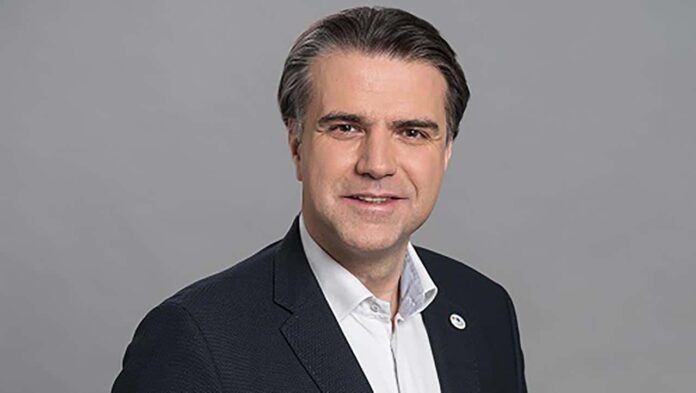The offer of the Polish consortium, led by Creotech Instruments, was selected on November 24, 2023, by the European Space Agency (ESA) to prepare the Phase 0/A for the most important European mission related to the mapping of the Moon. The goal of the Twardowski project is to provide precise data allowing for the utilization, by the end of this decade, of resources on the surface of Earth’s natural satellite. Creotech Instruments will be responsible for designing the entire mission and satellite based on its proprietary microsatellite platform, HyperSat. Other consortium members responsible for the optical payload include the Space Research Centre of the Polish Academy of Sciences (PAN) and the Institute of Geological Sciences of the PAN. The value of Phase 0/A (design) is 250,000 EUR. The project will start in January 2024 and last 12 months. Funding for its implementation may come from Poland’s increased optional contribution to ESA this year, with a recommended allocation for the HRE program (Human and Robotic Exploration) amounting to 100 million EUR. The total cost of the previous European Moon mission, SMART-1 in 2003, was 110 million EUR, and the Twardowski mission is planned as a comparably sized project.
The Twardowski project aligns with the company’s strategy to commercialize the HyperSat platform to become a leading provider of microsatellite technology in the EU in the coming years. It is also consistent with ESA’s long-term plan for Moon exploration, part of the broader E3P (European Exploration Envelope Programme) which includes Moon and Mars exploration. One of the key projects is Lunar Mapper, which may include a concept from the Twardowski project.
The Polish consortium, with Creotech as the leader, will conduct a feasibility study for the most important European mission related to Moon mapping. The Twardowski project fits perfectly into our development strategy and within the framework of ESA’s widely planned and long-term activities focused on the exploration of Earth’s natural satellite. This is a great distinction for our company and an opportunity to send the most technologically advanced mapping satellite in the history of space industry development into orbit around the Moon. The satellite will be based on our proprietary microsatellite platform, HyperSat, and adapted for deep space operations, including high radiation resistance and handling of a large, advanced payload. The design of this research instrument will be the responsibility of the Space Research Centre of PAN. Thanks to the Twardowski mission and precise mapping by the satellite, our data will enable full utilization of the Moon’s resources through future extraction, processing, and even production on its surface. Thus, as a Polish commercial company, we will significantly contribute to humanity’s expansion into space – comments Dr. Grzegorz Brona, President of the Management Board of Creotech Instruments S.A.
The consortium for the Twardowski mission consists of Creotech Instruments, the leader responsible for designing the entire mission and satellite, the Institute of Geological Sciences, which will define the requirements for the mission and scientific instrument, and the Space Research Centre of PAN, responsible for the design of the research instrument based on the assumptions of the IGS and ESA. The scale of the mission assumes cooperation with additional entities, including those from other countries, with the intention of maintaining key tasks on the Polish side to build national competencies and raise the significance of the Polish space industry on the international stage.
The satellite designed for the Twardowski mission will be based on the proprietary microsatellite platform HyperSat and solutions developed by Creotech Instruments, including for the EagleEye mission. The project assumes full adaptation of the platform to operate in the Moon’s orbit at approximately 100-300 km altitude and the ability to change positions between pericenter and apocenter. The research instrument will be equipped with three or four detectors for: guided light, near, medium, and far infrared. The images of the Moon in the Twardowski mission will be among the best and most precise from the perspective of current plans for conquering the Silver Globe.
The selection of the Twardowski project means that after the first European Moon mission, SMART-1, 20 years ago, Poland will now play a key role in the next project of this kind in the European Union. The SMART-1 mission lasted nearly 3 years and provided important data on the geology and chemical composition of the Moon, but the satellite for the Twardowski mission will be equipped with research instruments with better parameters, allowing for further significant discoveries and expanding our knowledge of the Silver Globe. The use of visible and infrared spectrum will enable very clear images and a map of the most sought-after minerals and resources hidden on the Moon’s surface. Our analysis indicates that we will be able to cover up to 98% of its surface, and based on the high-quality information we provide, mines adapted for extraction on the Moon could be precisely designed and built – adds Dr. Grzegorz Brona.
The value of the market related to Moon exploration is projected to be around 170 billion USD by 2040, including transport, data processing, mining, and production (Lunar market assessment 2021, PwC).
HyperSat is the first satellite platform in Poland developed from scratch by Polish engineers, consisting of modules of individual subsystems. It allows for scalable design and production of satellites weighing from 10 kg to several tens of kg, and in the future up to 200 kg, with varied purposes including image recognition, telecommunications, or navigation from low Earth orbit. HyperSat has been developed by Creotech Instruments since 2017 with support from ESA experts and in accordance with European requirements for designing and building satellite systems (ECSS). The platform is the basis for the EagleEye mission, to be realized in 2024, and for the PIAST mission. The company also aims to use it in strategic defense projects at the national and European level.
In July 2023, Poland made a strategic decision to increase its national commitment to the ESA budget by an additional 295 million euros for 2023-2025. The mechanism of the national contribution to ESA allows for the recovery of almost the entire amount paid in the form of projects and orders from ESA for national companies. Over the past 10 years, Creotech has completed more than 25 space projects with ESA, becoming one of the largest Polish contractors and the first choice in Central Europe for key Agency projects. The company is currently in talks with ESA about several other space missions based on its proprietary microsatellite platform HyperSat.


















